The Amazon Rainforest is frequently praised for its unparalleled biodiversity, a lush green world teeming with life. However, concealed among its deep foliage, muddy rivers, and humid undergrowth live some of the deadliest animals on the planet. From stealthy hunters to venomous critters and electric predators, the Amazon’s wildlife reminds us that surviving in the forest is no easy task.
Here’s a look at some of Amazon’s most dangerous creatures: magnificent, awe-inspiring, and sometimes terrifying.
1. Giants, Predators, and Venom — Who Rules the Jungle
Green Anaconda

- The green anaconda is the world’s largest snake by weight and one of the heaviest. Some people can grow up to 9 meters (30 ft).
- These snakes are apex predators who lurk in swamps and slow rivers before striking, utilising constriction to suffocate prey like capybaras, caimans, and other large animals.
- Anacondas usually avoid humans, but a huge and threatened snake could be hazardous.
Jaguar
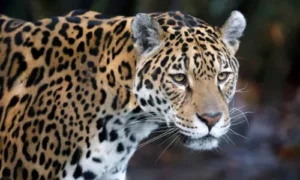
- Jaguars are some of the Amazon’s top land predators. They hunt mammals such as deer and peccaries, and have been reported to kill caimans.
- With powerful teeth capable of piercing heads or shells, they are extremely effective predators.
- Their spotted coats let them blend in well with the lush rainforest, allowing them to be stealthy hunters on land and near water.
Black Caiman
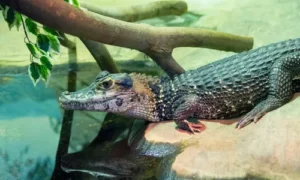
- The Amazon basin’s greatest predator is the black caiman, which may reach 5 meters (16 feet) in length and weigh up to 450 kg (about 1000 pounds).
- It preys on fish, reptiles, and large mammals. Because it rules over rivers and lakes, human contact, while uncommon, can be exceedingly serious in unfortunate or thoughtless conditions.
2. Small but Deadly — Venom, Toxins, and Electric Powers
Electric Eel
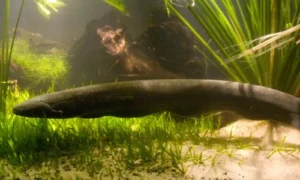
- Electric eels, which can give shocks of up to 600 volts—enough to stun prey or discourage predators—are designed to survive in the rainforest’s muddy, tranquil waters.
- They feed on fish and tiny amphibians. They are not normally aggressive toward humans, but in a surprise encounter in shallow water, their shock can be deadly.
Brazilian Wandering Spider

- This spider is known as one of the most deadly in the world. If a human is bitten, its venom can have catastrophic and even fatal — consequences.
- The name “wandering” derives from its behaviour: rather than weaving a web, it hunts energetically, typically at night, increasing the likelihood of scaring a human visitor who wanders off the path.
Poison Dart Frog
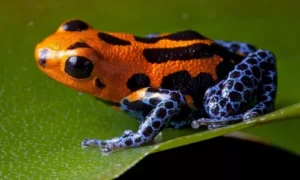
- This frog is dangerous despite its small size (approximately 3 grams and a few centimetres long) due to strong toxins released through its vividly colored skin, which nature employs as a warning indication of impending danger.
- That toxin can be extremely dangerous for predators (and people, if handled irresponsibly). Nevertheless, these frogs rely on their toxin and enigmatic colouring to protect themselves rather than actively attacking.
Bullet Ant
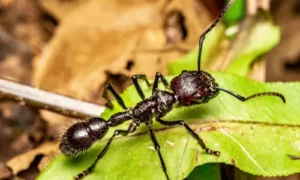
- The bullet ant sting is notorious; it may cause pain that lasts up to 24 hours and is frequently referred to be one of the most excruciating insect stings on the planet.
- Bullet ants are a component of the intricate ecosystem of the rainforest and live in sizable colonies. They mainly use their venom as a defence, but if you unintentionally wake them up, you won’t quickly forget the sting.
3. Aerial Hunters — Predators from the Skies
Harpy Eagle
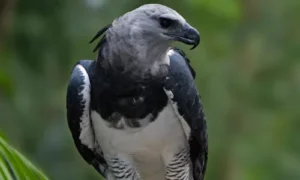
- The Harpy Eagle is a fearsome bird of prey in the Amazon, with a wingspan of up to 2 meters (6.5 feet) and talons that can grasp animals.
- Its primary prey consists of arboreal creatures like sloths and monkeys, which it can swiftly seize from trees, serving as a sobering reminder that even the tops of trees are dangerous.
The Bigger Picture — Nature’s Balance & Human Caution
The dangerous creatures of the Amazon, such as the treetop-prowling Harpy Eagle and the underwater electric eel, are both a monument to the strength of nature and a warning about its unpredictable nature. Although these animals are essential to preserving ecological balance, their existence also necessitates caution, understanding, and respect.
- Many of them stay concealed or stay away from people until they are in danger.
- A mistake, such as a thoughtless swim or a loud noise at night, can result in a dangerous encounter in such a large and isolated forest.
- However, it’s also important to keep in mind that these animals are survivors who are ideally suited to their surroundings rather than being “evil.” Their presence contributes to the health and balance of the rainforest ecosystem.
Here are some things to consider if you visit (or write about) the Amazon.

- Never attempt to approach or agitate wild animals; instead, show them respect at all times. Many are hazardous if handled, such as poison dart frogs and poisonous spiders.
- Avoid slow, murky rivers and the margins of rainforests as they may be home to anacondas, caimans, or electric eels.
- Steer clear of leaf litter and bushes when travelling through forests; otherwise, you risk disturbing insects such as bullet ants or snakes.
- From a distance, recognise that the Amazon is not a theme park. Every animal has a vital part in this intricate and delicate ecology.
Conclusion
Amazingly beautiful and extremely dangerous, the Amazon Rainforest is a place where existence depends on keen senses, strong adaptations, and reverence for the rules of nature. The creatures of the jungle, which range from enormous constrictors and cunning large cats to poisonous frogs and terrifying insects, inspire wonder and concern.
Be humble and respectful of the wild if you ever get the opportunity to travel through the Amazon with professionals, because we are only guests in that primordial universe.





